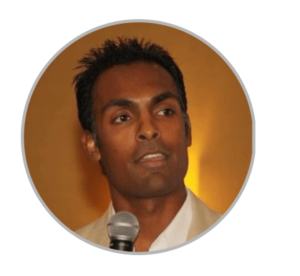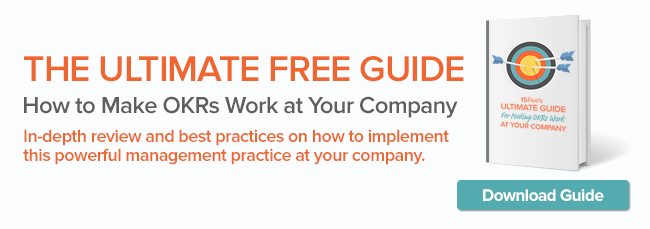How to Engage Millennials in The Workplace: Clarity & Accountability
As businesses undergo workplace shifts and transfer of knowledge around responsibilities, there is often concern on how to bridge generational gaps. Many of our government clients have really started to address this through “emerging leaders” style programs and leadership academies.
So as the discussion about Millennials in the Workplace evolves, we ask if they are really the entitled generation, or if that’s a misconception. What is it that they want?
Our friends at Gallup and their extensive studies have come to a very interesting finding. Millennials are often misperceived as expecting advancement from day 1, even in the absence of performance. Millennials can be perceived as disengaged, and Gallup’s research as noted in the article Few Millennials Are Engaged at Work, indicates that only 29% of Millennials are engaged in their job.
Truth be told, the number of engaged employees across the United States for all generations is not much better at 33%. So stigmatizing Millennials for being disengaged appears all too wrong. Perhaps this misconception derives from the fact that Millennials that are disengaged are more likely to have the courage to take the jump and try something different until they become engaged.
Craving Accountability?
Gallup has also found that Millennials seem to crave accountability. In fact, 56% who report that their manager holds them accountable at work are engaged. Gallup puts this in context for us:
What this means, is managers can double the likelihood of engaging Millennial employees by doing something many would consider simple and intuitive: Hold them accountable.
Consistently holding employees accountable tends to drive maximum employee performance AND makes those employees happier and more likely to stay. It goes without saying, but the cost of employee turnover is catastrophically expensive. Estimates on the cost of turnover vary wildly and range from 16% to over 200% of an employee’s annual salary. Minimizing that and maximizing return on employees seems to be a realistic and sensical goal to go after, especially when it doesn’t require anything too insane to actually get there.
With Millennial workers making up 38% of our workforce currently and rapidly rising, embracing Millennials as part of the success equation is critical.
Creating Clarity: Performance Goals and Priorities
In the world of Strengths, our differences are our advantages. Our different talents are what allow us to combine to create well rounded teams that can operate cohesively toward clear goals and desired outcomes. Fundamentally, Millennials live and work very differently than other generations.
Although their needs may be different than other generations, Millennials are craving to know what is expected of them at work and have clear performance goals.
Gallup has found that 72% of Millennials who agree that their manager helps them set performance goals are engaged. This is one piece of the equation. The other piece that is critical is helping to create direction around prioritizing.
One major generational differentiator is 71% of older generations strongly agree they know how to prioritize responsibilities, compared to only 54% of Millennial employees. As part of the performance puzzle, great managers can recognize this, and support Millennials in prioritizing their responsibilities. In fact, Gallup reports that almost 70% of Millennial employees who strongly agree that their manager helps them establish priorities are engaged compared to only 27% for those Millennials who strongly do not agree.
So What?
As we navigate through the generational shift taking place in the workplace, perhaps there is an opportunity to recognize, acknowledge and appreciate our generational differences. Instead of looking hopelessly at the gaps, let’s figure out how to bridge them. Knowing that accountability, goal clarity and prioritizing responsibilities are such critical components for driving millennial employee engagement and reducing turnover…what can managers do?
As a leader, how are you creating accountability consistently on your team? Is this clearly communicated? How does this align with goals? It’s imperative to start with clear goals in mind, and to make sure that the people you lead have clarity around that goal. As you present what you see as clear goals, make sure that your team can articulate those goals back to you as well.
You don’t have to come up with all of the goals. This can be a collaborative experience with those you lead. In fact, this process can help those you lead to take ownership of their role and the use of their talents. Some on your team may be better at coming up with goal and the big picture perspective of what the end game looks like, and others may be better at really figuring out how to execute and get there.
Others on your team may be extremely talented in keeping the team together towards that goal alignment while others still may excel at championing the goal for the team and to stake holders on other teams. As a leader, spotting that talent can help you align your team and develop your people.
Back to the Schoolyard: Telephone AND Simon Says
Think for a moment of the game telephone played by school children. A class of students will form a line. One student will be provided a phrase on a piece of paper, and they will whisper it into the ear of the student next to them. The process will continue with each student whispering what they believe the phrase was until it gets to the end of the line, until the last student has been told the phrase. Rarely are the phrase at the last student the same as what the first student was told. I have conducted this exercise in College classes as well, and the results have been the same as with children.
As humans, messages get lost amidst the noise of external factors and sometimes within how it is received. As a leader, not only must we be able to articulate the goal clearly, it is also imperative to ensure the people you lead can do so as well. If there are struggles present, perhaps it is an opportunity to have a discussion as to what the noise is, or what the perceived roadblocks are on the path. Perhaps those you lead are clear on the goal, but because they have a closer pulse on the path to get there, they are able to spot hurdles that you may not see as the leader.
How are you going to turn that key so that dialogue can happen, where not only are they able to align around the goals, but feel safe to share the roadblocks or other paths that may be there?
To make sure this environment is developed, as a leader, it is imperative that the people you lead feel safe. In his second book Leaders Eat Last, Simon Sinek explains this via his Circle of Safety. Without safety, companies cannot thrive.
Safety does not mean ear plugs because it is too loud at work (although that’s important too). Safety means employees can express their ideas and speak openly to you and others. Safety means they are valued for being valuable and that they trust you as the leader and others on the team. Safety means they know others will not allow them to fail and they will not allow others on their team to fail.
So I leave you with these questions for reflection:
– What are you doing, or can you do, to make sure your people feel safe?
– How are you setting goals and creating clarity for the team and individual employees?
– Can the goal setting process be collaborative, allowing those you lead to be involved and allowing them to have their ideas explored?
– Are you helping your team to prioritize work if needed?
Even though the team goal may be the same, each individual may have unique contributions and needs through the filter of their unique talents. An employee that is dominant with Clifton StrengthsFinder Context Talents, may need to understand what was previously done in past similar initiatives, before jumping head first into a new one that is similar.
By understanding the past scenarios, that person dominant with Context can be a huge resource to the team, contributing through being able to make sure past successes are repeated and past pitfalls are avoided as they move forward on a process.
Give those employees a chance to gain that context or provide some of it for them to accelerate their movement forward. Managers that identify employee needs and help others to meet them, can create an environment where safety, trust, and talents thrive. That is the foundation for bridging the generational gap and being able to create clarity on performance goals, prioritization, and accountability. Your actions as a manager will either build these or derail them. Can you afford not to make building them a priority?
 Darren Virassammy is Co-Founder and COO of 34 Strong Inc. a leader in StrengthsFinder training and consulting. 34 Strong works with organizations across the United States in developing teams around talent to optimize performance and maximize results. His Top Five are: Achiever, Arranger Relator, Learner, Responsibility. You can connect with him on LinkedIn and Twitter.
Darren Virassammy is Co-Founder and COO of 34 Strong Inc. a leader in StrengthsFinder training and consulting. 34 Strong works with organizations across the United States in developing teams around talent to optimize performance and maximize results. His Top Five are: Achiever, Arranger Relator, Learner, Responsibility. You can connect with him on LinkedIn and Twitter.
This post was originally published on The 34Strong Blog.
Image Credit: State Farm





